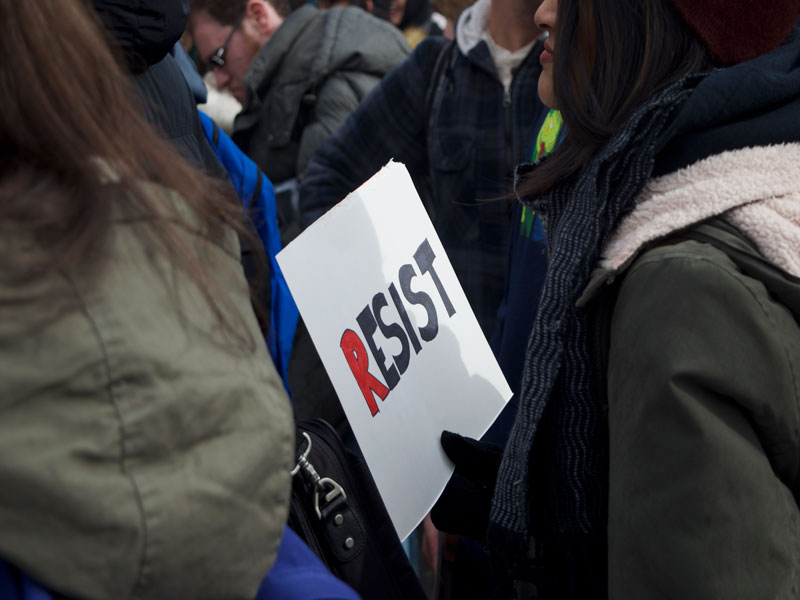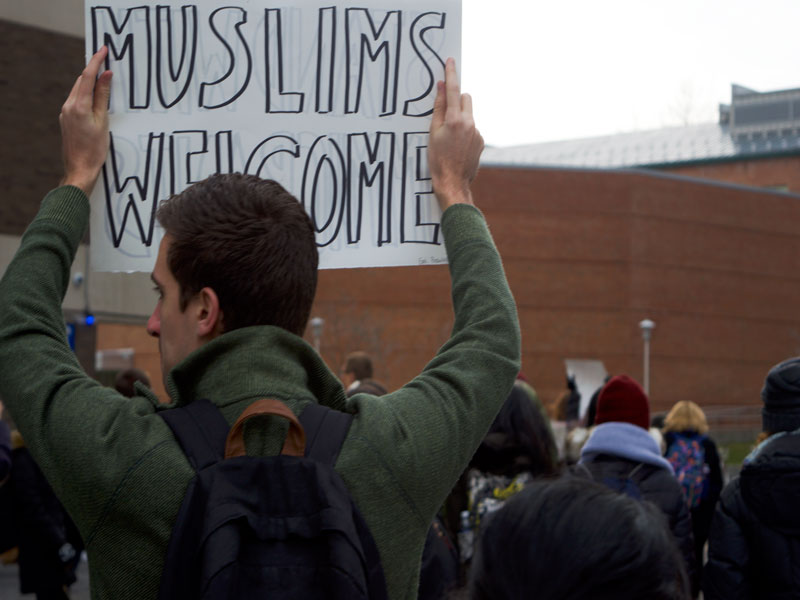Some 200 students who were stuck abroad made their way back to the United States after Judge James Robart suspended President Donald Trump’s executive order this past week.
Payam Jafari, an Iranian art student who came back to the Academy of Art in San Francisco on February 5th, 2017, after the federal judge suspended the travel ban, risked not finishing his program.
“I was in Iran visiting family when I heard about the ban,” Jafari said. “I saw myself stuck in Iran while I only had one semester left to finish my masters program in the U.S.”
The executive order sought to ban the entry of people from Libya, Sudan, Syria, Iraq, Iran, Yemen and Somalia.
“If I couldn’t have come back, My movie wouldn’t have any chance to be worked on.” Jafari, who studies film, and is the director of a feature currently in production, said.
Jafari said his university did not do much to help with his situation, and only offered him the opportunity to finish his program online or wait the three months until the ban was supposed to be lifted.
“I would expect the university to stand up for their students much more strongly and defend their rights loudly against this preposterous ban,” Jafari said in an email. “Volunteers, attorneys, protesters and those Americans who attended to the protests made my way back to SF, not the school.”
The United States has been the home to over 17,000 students from the seven banned countries within the past year. Iran alone sent over 12,000 students to study in the U.S in the 2015 to 2016 academic school year.
Universities such as Columbia, Cornell, Duke, Carnegie, etc. filed a joint amicus brief that specified the university’s standing on the recent executive order on immigration.
“Columbia University seeks to attract a diverse and international faculty and student body, to support research and teaching on global issues, and to create academic relationships with many countries and regions,” stated in an amicus brief filed on February 13. “It expects all areas of the university to advance knowledge and learning at the highest level and to convey the products of its efforts to the world.”
“NYU did a great job trying to cover students who are affected and offering support,” Kate Lee, a Chinese international student at NYU said. “But I wish NYU, as well as other universities, could root for their students more firmly in the future regarding similar situations.”
The NYU Student Visa and Immigration service warned students not to sign any documents at the airport, especially the I-407 form, in fear of them losing their citizenships or any legal rights as students.
The New York State SUNY system as a whole host approximately 22,140 international students, 320 of them in which are from the seven banned countries.
“As this executive order is being interpreted by immigration authorities, I want to provide you with information and to offer support, as Stony Brook labors through the new rules governing visas and entry to the United States,” President Samuel L. Stanley Jr. of SUNY Stony Brook said in a public statement.

SUNY Buffalo hosts more than a third of the impacted SUNY students in New York, primarily from Iran. The university, like most, contacted students to offer support based on their personal situation and to help them finish their education. City Universities of New York also offered similar assistance to the affected members of their CUNY community.
“I’m an Iranian citizen and I’m proud of it. I’m here through student F1 visa, and in this situation I cannot leave the country or if do, I cannot re-enter,” Jafari said.
Although the ban is currently halted, universities see their hands tied up on issues concerning the future of the immigration ban and their students. Many other students who are in a situation similar to Jafari, wish that their schools could unswervingly back up their students.
